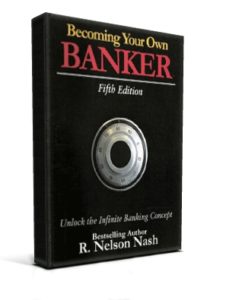A Discussion with Two Top Producers
I love the idea of key person insurance because it so clearly reflects the core concept behind life insurance itself. One of the most basic of reasons for a business to purchase life insurance is to protect itself from the financial hit it is almost certainly bound to take should one of its key people die. Seems like common sense, doesn’t it? But if so, why aren’t more companies insuring their key people and why aren’t more producers active in this market?
I’m not sure I can answer the questions about why more people aren’t involved, but we can certainly explore why some of the best producers in the business are involved.
Recently I asked two of the best producers I know, Guy E. Baker, MSFS, CLU, of Irvine, California, and Brad Elman, CLU, of Los Altos, California, about their experiences in the key person market. They were both gracious enough to share a lot of detail on how they’ve succeeded in this market, beginning with the decision to enter it.
Why Key Person Insurance: Sometimes it seems that one of the biggest challenges for a producer is figuring out which of the many opportunities and markets make the most sense for them. There is simply no way you can be an expert in every realm of the insurance world, so I asked both Guy and Brad why key person insurance became a focus for them.
For Guy, that question was putting the cart before the horse. “The business market is like a huge, complex puzzle,” Guy explained. “It is a matrix of opportunity waiting for the right advisor, agent, or consultant to come along and solve the problems. A great entry point is key man — or key person — insurance. But, before we look more deeply at key person and the opportunities, it probably would be prudent to discuss exactly what key person insurance is.
“The most obvious answer is that key person insurance is life insurance coverage payable to an entity — whether it is a corporation, an LLC, or a partnership — for the economic loss sustained if the insured were to die while employed.
“Remember,” Guy cautioned, “a primary principle of life insurance is that the beneficiary has to sustain a proven economic loss if the insured dies. That loss has to be measurable and ethical.”
To illustrate just what he means by that, Guy said, “This would never happen, but to make the point, suppose an automobile salesperson sells company cars to the owner of a large corporation. The owner dies and the automobile salesperson loses a customer and all of the future sales. Is this insurable? After all, the owner was a source of substantial and consistent income for the salesperson and the dealership. But is there an insurable interest? Obviously not, because there was no legal relationship between the parties. Insurable interest is based on some kind of legal or moral obligation, and an economic loss to that person or entity should the insured die. Without insurable interest, life insurance ceases to be a social construct and becomes a form of gambling. The fact that life insurance is moral, ethical, and provides a social good is why the benefits have been preserved legislatively for many decades.”
A Discussion with Two Top Producers
Guy continued, “Presuming there is a legal and/or moral obligation, the purpose of life insurance is to provide economic replacement for a measurable loss sustained by the entity if the key person dies. Obviously this is an easy argument for a spouse and children. Now, how is the amount determined? This is the science behind the art. Determining the value of a key person is debatable. Is it a multiple of salary? Is it a percentage of the corporate profits? Is it the amount of debt the company carries? What would the loss be to the entity, should the employee die suddenly? A good fact finder is the most prudent way to make this evaluation.”
With that excellent overview of key person insurance as background, Guy sees key person insurance as an exciting and challenging way to enter the complex and interesting business market.
For Brad Elman, his introduction to the market came early on, and in a fairly dramatic way. “I had a very direct experience with this kind of insurance planning early in my career,” Brad said. “We had a client who was starting a tech company here in Silicon Valley. The founder contacted us about setting up the employee benefits for the company. They were too small for a true group life policy, so I recommended using individual life. Since the founder was seeking venture capital, we suggested that he take out a key person policy as well to protect the company. This conversation took place on a Friday, and he asked me to call the following Tuesday. He was killed in an automobile accident that weekend.”
Key Challenges: As with any market or niche, there are bound to be unique challenges. For Brad, there are essentially two. But first, he clarified for me that the issue of key person insurance comes up in varying ways. “We don’t ‘open the door’ with key person life,” Brad said. “When we are talking to our benefits clients, we will bring it up. Otherwise, we are referred into these cases by an attorney or CPA. So we never really had a ‘marketing challenge’ when entering the market.”
But he continued, “There are two challenges we do face today. First is explaining to the executive why the company needs the insurance when it doesn’t benefit the executive directly. This requires a gentle approach, because among other things, we need to assure the executive that all of the medical information including blood tests will not be given to the company. When discussing the key person life concept with the client, we will suggest that in addition to the key person policy, that the company also takes out a policy payable to the executive’s beneficiary. This policy is owned by the executive and is paid by a bonus to the executive. This practice of the company purchasing both policies makes the whole conversation about taking the medical exam easier. As a practical matter, if the key person does die, then the executive’s family receives a benefit in addition to the company. “
And the second challenge? “The second challenge is tangential to what I mentioned earlier and is a byproduct of any corporate or cross-owned policy. The owner of the policy has the rights to the policy, which include access to the application and often the medical information of the insured. It is important to discuss all of this upfront, and for the owner to use discretion as it relates to the information that may be accessible.”
For Guy, one of the challenges relates to the determination of the economic value of the key person. Referring back to the questions he raised about the various legitimate methods for determining the amount, Guy told me, “One could make an argument for any of those formulas. A good underwriter will query the management of the company on the economic value of the proposed insured to the firm. It is not unreasonable to think the profits would be impacted if a key scientist, marketing officer, or financial officer were to expire. If the president of the company, who knows and controls the key accounts, should die, what impact would that have on employee confidence, bank lines, supplier credit? How long would the company be able to continue should the cash flow be dramatically impacted? In many cases, it could mean the end of the company. So infusing significant cash to make payroll, pay off the credit lines, and to calm the suppliers is a reasonable investment on the part of the company. There are numerous risks any company faces if the key person dies. “
Guy also pointed out the challenges faced by the variety of insurance vehicles available. “What type of insurance should they purchase, term or permanent? The term sale is relatively easy. The cost is minimal, compared to the risk. It is easy to understand and justify. But is it the right choice?”
Keys to the Year Ahead: So in light of the way their business are currently trending, I asked both Guy and Brad about the potential for key person in their 2014 business. How are things shaping up? Guy sees a market that is dynamic. “Many companies are trying to find ways to provide meaningful benefits to their top management team. Since most companies cannot afford a pension plan, the retirement benefit of choice is the 401(k). Some companies will even include a profit sharing element. But if you do the math, with the statutory caps and testing, it is hard to create enough capital to provide a steady income at retirement that will replace 70% of the final pay. It is much closer to 20% to 25% for most highly compensated individuals. But the options for a supplemental plan are unlimited. Unfortunately, most companies are afraid of 409(a) and its ramifications on nonqualified plans. There are still opportunities for split dollar coverage and Section 79 plans. The need for owners to tie key people to the company long term has not gone away. Providing a meaningful benefit that is affordable and valuable is still a noble objective.
“As a result,” Guy continued, “business owners would be wise to consider combining the key person coverage with a meaningful benefit and get double-duty dollars. It would even be possible to add a benefit for the family of the key person. Anytime you can get triple-duty dollars, you are providing a major service.”
And getting back to the challenge of deciding whether to use term or permanent insurance in the plan, Guy sees an opportunity there as well. “Permanent insurance is an ideal product for these problems. The cash values can be used as a down payment for a buyout. They can be accessed to fund a salary continuation plan or as a receptacle for salary deferrals. There is never a problem finding a way to use the money once it is there. So be creative and think of ways the cash values can service the company long term.”
Brad’s answer to my question about the potential for business in 2014 was short and sweet: “We will continue to help our clients solve problem that result from premature death or a disability, and that would include key person life.”
Keys to Entering the Market: Both Brad and Guy are experienced veterans who have been operating in this market for many years. Obviously they’ve had success, but just as obviously, at one point in time they had to take that first step. So I asked them about their advice to producers who hadn’t moved into this market yet. What would they advise?
“Read articles,” Brad said, “like those appearing on this Web site and in industry magazines, and become an expert on the issues surrounding a company losing a key individual. Do joint work if you can.
“Think about the impact of a company losing anything that was critical to its success. For example, it can be powerful to tell an owner, ‘Mr. Company Owner, if you had a printing press that printed money for your company, would you insure it? Aren’t your VP of Sales, Engineering, and Customer Service all a little like that printing press?’
“To the young producer,” Brad continued. “I would also point out that it’s a lot easier to get a company to write a check than it is to get an individual to do it, and in the above example, if you were successful, you would have just sold six policies — a key person and a corporate paid policy to the three VPs. You also have three new personal clients as well to assist with other planning.”
For Guy, the earlier years were very challenging, and education was crucial. “When I first tried to enter the business market, I came up against the proverbial stone wall. It was daytime activity for sure. But the business owners were hard to meet and even harder to convince. It took persistence and hard work for me to eventually make a sustainable income. In fact, I quit the market entirely the first time I tried because I had so little success. But I eventually regained my courage and started again.
“I had to learn retirement plans, estate planning, buy sell insurance planning, the principles of corporate finance, and the practical rudiments of key person coverage to be able to conduct a meaningful interview with the business owner. I was 27 years old when I first tried to get an owner to listen to me. Fortunately, I had enough success that I was able to build a sustainable clientele. But it took five years before I was in the market fulltime.
“I had to get an education. Nothing I learned in college or grad school prepared me for the business market. My source of information came through the Chartered Life Underwriter program at The American College and was fortified by the Chartered Financial Consultant and the Masters Program. With those under my belt, I was equipped to have a candid and knowledgeable discussion with the business owner.”
Guy also addressed the starting point for someone who is eager to get into the market, but does not yet have any formal industry education. “What do you do if you have not invested in that education yet? Partner up with someone who has the knowledge until you can stand alone. There is great synergy in joint work. When I first started in the business, nobody worked together. But over the years, this changed and agents now understand the power of working the case as a team.
“So practically speaking,” Guy continued, “what are some concrete steps a relatively new agent should consider when thinking about the business market? First, I would get hold of all of the Million Dollar Round Table (MDRT) resources you can find on the subject. These are available to anyone in the business. MDRT is a great place to start and it provided me with much of the practical knowledge I needed to be successful. MDRT will give you input on the great ideas on how to prospect, what to say, and how to build a practice in the business market.
“Beyond that, I would suggest you find a knowledgeable agent who is willing to work with you. One of the problems here is that once you learn some of the skills needed, you become competition to that agent. So you might want to consider how you should address this issue. Some younger agents want a long-term relationship. Others just want to milk the information from the senior advisor and then move on. So it is important to know your long-term objectives and be up front about them. If a senior agent is willing to help, knowing you might eventually pull away and go it on your own, that is fine and ethical. But you should be clear on your plans.
“The final step would be to start a strong education program so you can become an expert in the field. Contact The American College and start on a study program.”
Some Final Thoughts on Key Person Insurance: From this conversation, there’s no doubt that Guy and Brad are optimistic about this market. But Guy, being Guy, wouldn’t wrap it up without looking a little deeper and a little further down the road. He asked, rhetorically, “What is the future of the business market? As long as we have companies doing business, taking risks and borrowing money, there will be a business market. There is great opportunity to help owners understand the perils inherent in their stock purchase agreements or cross purchase plans — if they even have one. There is a huge role for agents in the retirement planning market. Exit planning will become more and more important as the baby boomers age. So there is no shortage of needs in this market. Key person coverage might be the easiest way to pry open the door. If you start with term insurance, where the cost is affordable and the need is obvious, you can begin to build relationships and open up cases.”
And finally, he summed it up well, “So as you make your plans for the next five years and ask yourself about your future development and direction you want to take, think strongly about how you can capitalize on the opportunities in the business market. This is a market that is not going away. It is underserved for the most part. And the breadth of needs and solutions is like a Rubik’s cube, waiting for someone with the right algorithm to come along and solve the puzzle. “
And for the business owner, what a crucial solution that would be.
—
Guy E. Baker, MSFS, CLU, of Irvine, California, is the founder of BTA Advisory Group, a multi-disciplinary organization serving the needs of wealthy families and owners of closely held businesses. He is a 44-year Million Dollar Round Table member with 36 Top of the Table qualifications. He served as 2010 MDRT President and also in numerous MDRT leadership positions. He served on the TOT Board for 3 years. Additionally, Mr. Baker was 2000 President of the MDRT Foundation and is an Excalibur Knight. He also served as a board member of AALU and as president of the Orange County Association of Insurance and Financial Advisors. He was recognized by Worth Magazine as one of the top 250 Planners in the US and was elected to National Association of Estate Planning Council Hall of Fame 2005.
Brad Elman, CLU, is a principal at Nine Dots Benefits in Los Altos, Calif. His practice focuses on employee and executive benefits for closely held service companies. He is a 21-year Million Dollar Round Table (MDRT) member with 11 Court of the Table qualifications and one Top of the Table qualification.
Charles K. Hirsch, CLU, is executive editor of Insurance Forums. He is also the president of Hirsch Communications Consulting, LLC, a communications consulting operation in Florissant, Missouri. For many years, Chuck was the editor and publisher of Life Insurance Selling magazine and wrote the monthly column, What’s Going On in the Life Insurance Business. From 1999 to 2008, he was the publisher of several of the leading industry magazines in the life insurance, property/casualty insurance, and mortgage markets. These days, Chuck’s firm specializes in the development and execution of many kinds of communication strategies, particularly in the financial services business.









